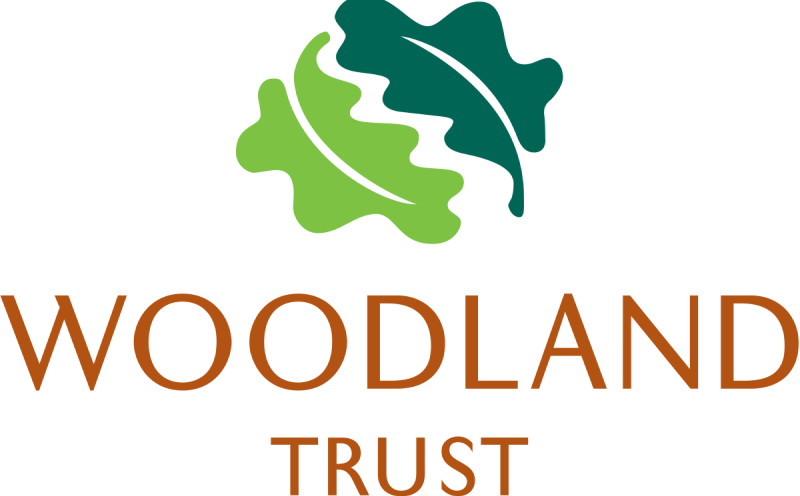


American Forests, Woodland Trust, and The Centre for Sustainable Healthcare partner to show people are missing out on the essential health benefits of trees
United Kingdom (December 5, 2023) — American Forests, Woodland Trust, and The Centre for Sustainable Healthcare today unveiled the U.K. Tree Equity Score, a tool from U.S. conservation nonprofit American Forests intended to bring awareness to the inequitable tree cover across 34,000 of its urban neighborhoods — nearly 80% of the population — and the disparities such variance brings.
First launched by the U.S.-based nonprofit American Forests in 2021, Tree Equity Score is a free, interactive tool that represents a breakthrough in democratized data, enabling communities to learn more about their own inequitable distribution of tree cover. This inequity often leads to whole communities experiencing negative health and economic impacts exacerbated by climate change. Neighborhoods in the U.K. with the highest number of trees, for example, have up to 33% less air pollution and are 4 degrees Celsius (C) cooler during a heat wave than neighborhoods where tree canopy is lowest, according to this groundbreaking tool.
Current U.K. average urban tree canopy cover is 17%, which is below government recommendations. Tree Equity Score shows what it would take to increase the U.K.’s average urban tree cover to 30%, roughly doubling it. This would enable the U.K. to achieve Tree Equity.
“This program symbolizes a major step in our mission to ensure access to urban forests is equitable across the globe,” said Benita Hussain, Tree Equity Program lead at American Forests. “In the U.S., we’ve seen how data-driven strategies can transform communities through urban forestry, enhancing not only environmental health but also social wellbeing. For the first time, differences in levels of tree cover in towns and cities across the U.K. have been mapped to help leaders invest in the right trees in the right places.”
In the U.K., a number of cities are already adopting Tree Equity, including Birmingham and Belfast which recently included plans to increase tree cover. But finding space for trees in densely populated neighborhoods isn’t always easy. Because trees are essential infrastructure, space and budget for trees should be incorporated into public policy including housing, transportation and health. Retrofitting trees into hard landscapes will be essential to improving Tree Equity in dense cities world wide. The tool will be demonstrated at COP28, the UN climate conference on 8-9 December in the United Arab Emirates, with the goal of encouraging more cities throughout the globe to adopt the tool.
Dr Darren Moorcroft, CEO at the Woodland Trust, said it could be a “breakthrough” when it comes to targeting resources to areas critically in need of more trees. He said, “This is a breakthrough moment for trees in the UK. For the first time everyone can see an inequity that is hidden in plain sight – access to the essential benefits of urban trees. Tree Equity Score shows that there are major differences in levels of tree cover between neighborhoods and that these often follow socio-economic trends. Tree Equity Score is a tool for action to start addressing this inequity and ensure the essential benefits of trees can improve public health and climate resilience for all.”
Tree Equity Score uses census data, a new tree canopy dataset from Google and six climate, health and socioeconomic datasets to generate a score out of 100 for every neighborhood. The lower the score, the greater need for more trees.
The U.K. Tree Equity Score reveals disparities including:
- Neighborhoods that are least deprived for income have more than double the tree cover per person than the most deprived neighborhoods and have nearly 20% less nitrogen dioxide (NO2) air pollution.
- Neighborhoods where tree cover per person is highest have roughly 30% less NO2 pollution and 10% less particulate matter pollution than neighborhoods where tree cover is lowest.
- In England, regional differences are present when averaging Tree Equity Scores in neighborhoods for each local authority area. The 10 local authorities with the highest scores are all in the south. The 10 local authorities with the lowest scores are all in the north.*
Research from the U.K. Environment Agency shows air pollution is the single biggest environmental threat to health in the U.K., shortening tens of thousands of lives each year.** Trees improve air quality by removing particulate air pollutants, as well as cool city streets due to the natural shade they provide. Doubling tree cover could cut the number of heat-related deaths in European cities during summer months by nearly 40 percent, according to a study by the Barcelona Institute for Global Health. This study included a number of cities from the UK.***
The Centre for Sustainable Healthcare (CSH) works with healthcare professionals and the wider public to help develop the knowledge, skills and tools people need to play their part in the transformation to sustainable healthcare. “We know that trees have a huge positive impact on people’s health and wellbeing, and healthcare providers are uniquely placed to champion access to these benefits,” said Sarah Jordan, Green Space for Health Director at CSH. “From individuals through to anchor institutions such as the NHS, Tree Equity Score can be used at any scale to help get trees where they’re needed most and reduce health inequalities.”
American Forests’ Tree Equity Score tool has been in use in the United States for two years and is integral to its plans to advance Tree Equity in 100 cities by 2030. In April 2023 in the U.S., the Biden-Harris administration announced $1.5 billion in grants to increase equitable access to trees as part of the 2022 Inflation Reduction Act and the President’s commitment to promote environmental justice.****
To learn your neighborhood’s Tree Equity Score, visit https://uk.treeequityscore.org/ .
###
About American Forests: American Forests is the first national nonprofit conservation organization created in the U.S. Since its founding in 1875, the organization has been the pathfinders for the forest conservation movement. Its mission is to create healthy and resilient forests, from cities to large natural landscapes, that deliver essential benefits for climate, people, water and wildlife. The organization advances its mission through forestry, innovation, place-based partnerships to plant and restore forests, and movement building. For more information visit: www.americanforests.org.
About Woodland Trust: The Woodland Trust is the largest woodland conservation charity in the UK. It has over 500,000 supporters. It wants to see a UK rich in native woods and trees for people and wildlife.
The Woodland Trust has three key aims, it seeks to protect ancient woodland, recognizing it as a rare, unique, and irreplaceable natural resource. Secondly, it is dedicated to the restoration of damaged ancient woodland, with the goal of reviving and preserving these precious pieces of our natural history. The Woodland Trust aims to contribute to the environment by planting native trees and woods, with the overarching objective of creating resilient landscapes that benefit both people and wildlife. Established in 1972, the Woodland Trust now has over 1,000 sites in its care covering approximately 29,000 hectares. Access to its woods is free so everyone can benefit from woods and trees. For more information see https://www.woodlandtrust.org.uk/
About Centre for Sustainable Healthcare: The Centre for Sustainable Healthcare (CSH) inspires and empowers people to transform healthcare for a sustainable future. Collaborating with partners both within and outside the healthcare sector, CSH engages professionals, patients and the wider community in understanding the connections between health and the environment, while reducing healthcare’s resource footprint. For more information see https://sustainablehealthcare.org.uk